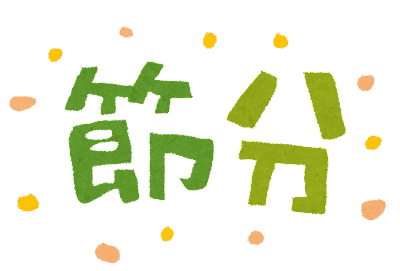Setsubun soon.
Supermarkets started selling things like beans.

Have you ever wondered what these mysterious beans are used for?
This time, we will introduce the meaning and rituals of Setsubun, an ancient Japanese traditional event, as well as special rituals to ward off evil and bestow good fortune.
In addition, we will introduce the history of Setsubun, the details of the ceremony, and points to enjoy Setsubun. Let’s get straight to the point.
What is Setsubun and where did it come from?
Setsubun refers to the day before the first day of spring in the Japanese lunar calendar.
It is considered to be a day of transition to divide the seasons and gather power.
Also, “Setsubun” means to extend the season, and it is also known as “Harai no Sekku,” a festival that wards off negative energy and disasters of the year and brings good luck in the new year.
It is said that the origin of Setsubun dates back to the Heian period, when a ritual of burning beans was held to purify Ise Jingu.
Since then, every year at home and at temples and shrines, roasted beans are thrown into and out of the house.

Meaning and Significance of the Setsubun Ceremony
Setsubun is associated with the kami, an element of Shinto, and the millennia-old Japanese practice of purifying the mind.
The Setsubun ritual aims to rid the house of the previous year’s misfortunes and welcome the coming year’s good luck and health into the house.

The main ritual involves throwing roasted soybeans called “fukumame” inside and outside the house while chanting “Fuku wa uchi! Ogre wa soto!” The demon is out! While chanting, sprinkle roasted soybeans inside and outside the house. (Fuku wa uchi! Oni wa soto!” while throwing lucky beans inside and outside the house.)
Oni are grotesque monsters, and it is common to drive them away with the purifying action of lucky beans.
Setsubun events and ceremonies
In addition, there are traditional rituals held on the night of Setsubun. “Mamemaki” is a ritual in which an elder (usually the father) wearing a demon mask throws roasted beans while the head of the family chants, “Oni wa soto, fortune wa uchi.”

The demon is out! Fortune is inside! This is a disgusting traditional event meant to ward off evil spirits, as it is believed that demons pop beans.

Ehomaki, which is held early in the morning after the bean-throwing, is also a traditional Setsubun event.

This is done early in the morning after the mamemaki, and the head of the household brings back a handful of beans and goes around the house, throwing the beans from the entrance to the windows.
Setsubun events can be enjoyed by everyone. After the bean-throwing, don’t forget to participate in the chanting “Oni wa soto! Fuku wa uchi!” Fortune is inside! ”.
Don’t forget to shout “Oni wa soto! Fuku wa uchi!” Variations in the Setsubun ritual, such as a contest to see who can throw the best, make it even more fun and unique.
Summary
Setsubun is a historical event that has been held in Japan for hundreds of years.
It is a memorable special day that everyone can enjoy, not only to get rid of bad luck in the house and welcome good luck and health.
By understanding the origins and rituals of Setsubun, you can celebrate Setsubun correctly and make it even more special and unique.


